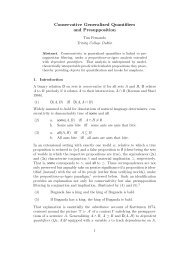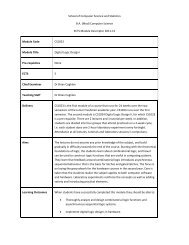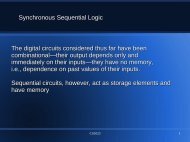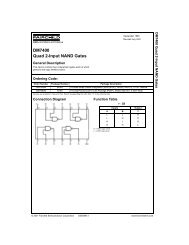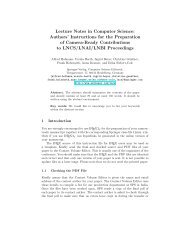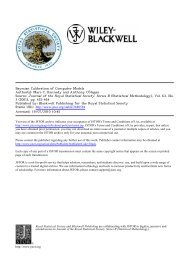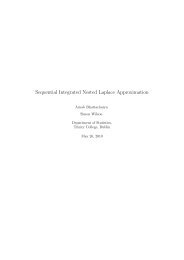Real-time Communication in Vehicular Ad Hoc Networks (VANETs)
Real-time Communication in Vehicular Ad Hoc Networks (VANETs)
Real-time Communication in Vehicular Ad Hoc Networks (VANETs)
Create successful ePaper yourself
Turn your PDF publications into a flip-book with our unique Google optimized e-Paper software.
Figure 2.1 Time Relationship<br />
There are two carrier sense functions, physical and virtual carrier-sense<br />
function, used to determ<strong>in</strong>e the state of the medium. Either of the two<br />
functions can determ<strong>in</strong>e the busy status of medium.<br />
In the BEB mechanism, a random Backoff Time value is chosen from a<br />
discrete uniform distribution with values between 0 and CW (Contention<br />
W<strong>in</strong>dow) by each node. The value is decreased by one for each idle <strong>time</strong> slot.<br />
Dur<strong>in</strong>g of DIFS and EIFS <strong>in</strong>terval, the decrement stops. Once the backoff<br />
<strong>time</strong>r reaches zero, transmission will commence. In contrast, when there are<br />
collisions dur<strong>in</strong>g the transmission or when the transmission fails, the value of<br />
CW will be doubled until it reaches the maximum CW value. Then, the<br />
backoff process will be restarted and the data packet will be retransmitted<br />
when the backoff process is complete. If the failure limit of transmission is<br />
reached, the retransmission process will stop, CW is reset to the <strong>in</strong>itial value<br />
and the orig<strong>in</strong>al data packet is discarded. But <strong>in</strong> broadcast models, there will<br />
not be any retransmissions and CW value. Figure 2.2 illustrates backoff<br />
process.<br />
6




